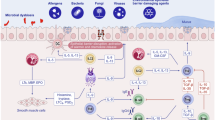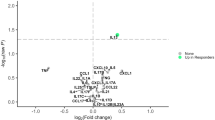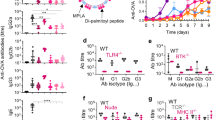Abstract
Trimellitic anhydride (TMA) is widely used industrially to make epoxy and alkyd resins, plasticizers and surfactants. The purpose of this study was to investigate whether contact hypersensitivity (CHS) is induced by repeated TMA challenge and the role of TNF-a and IgE in the TMA-induced CHS. The repetition of the challenge enlarged the extent of an early and a late phase of CHS in TNF-α+/+ (B6129SF2/J) and Balb/c mice. In the late phase of TMA-induced CHS, the peak of ear swelling responses by single challenge showed at 24 h after challenge, but the peak was observed at 8 h after repeated challenge. In the TNF-a knockout TNF-α-/- (B6;129S-Tnf(tm1Gk1) mice, the repetition of the TMA challenges enlarged the extent of the late phase of CHS, but less than those in TNF-α+/+ mice. Injection of anti-TNF-α antibody into the peritoneal cavity of Balb/c mice significantly decreased the extent of the late phase of CHS. Subcutaneous injection of anti-IgE antibody into Balb/c mice also decreased the extent of the late phase of CHS in dose-dependent manner. Histologically, infiltration of polymorphonuclear leukocytes and eosinophils was more pronounced in repeatedly TMA-challenged TNF-α+/+ and Balb/c mice than in the TNF-α-/- mice and anti-TNF-α or anti-IgE antibodies treated Balb/c mice. These results indicate that mice sensitized by TMA could possibly offer a useful model to study the mechanism of CHS, and TNF-a and IgE may act as potential modulators in the late phase of TMA-induced CHS. Neutralization of TNF-α and IgE by anti-TNF-a or anti-IgE antibodies may provide therapeutic tools for the treatment of TMA-induced CHS.
Similar content being viewed by others
Article PDF
Author information
Authors and Affiliations
Rights and permissions
This is an Open Access article distributed under the terms of the Creative Commons Attribution Non-Commercial License (http://creativecommons.org/licenses/by-nc/3.0/) which permits unrestricted non-commercial use, distribution, and reproduction in any medium, provided the original work is properly cited.
About this article
Cite this article
Chai, O., Lee, HK., Lee, Y. et al. Roles of TNF-α and IgE in the late phase of contact hypersensitivity induced by trimellitic anhydride. Exp Mol Med 37, 408–417 (2005). https://doi.org/10.1038/emm.2005.51
Published:
Issue date:
DOI: https://doi.org/10.1038/emm.2005.51
Keywords
This article is cited by
-
Evaluation of chemical-specific IgG antibodies in male workers from a urethane foam factory
Environmental Health and Preventive Medicine (2018)



